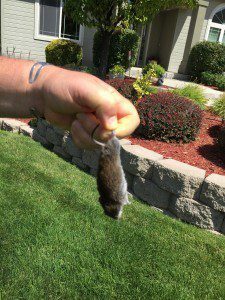 If you live anywhere in the Boise and surrounding area, you may have noticed an increase in the vole activity. Voles are incredibly destructive and will devastate your beautiful, manicured lawn in no time! Let’s dive into the world of voles and learn a little more about these damaging little mammals.
If you live anywhere in the Boise and surrounding area, you may have noticed an increase in the vole activity. Voles are incredibly destructive and will devastate your beautiful, manicured lawn in no time! Let’s dive into the world of voles and learn a little more about these damaging little mammals.
Voles are found all over North America. Colorations vary from shades of grey to brown. They have short tails and legs and are anywhere from 4-9 inches in length. They thrive in areas where there is ample grass and foliage as they are primarily herbivorous, however they will occasionally eat insects and worms. But their veracious appetite for roots and grasses is what causes them to be so damaging to lawns, parks, and livestock pastures.
Voles are active year round, but we tend to see an increase in activity in early spring and into the summer months. Voles, like most rodents, multiply quickly! Each litter can have up to 6 offspring, and females can have up to 10 litters per year. This means just one female is capable of producing 60 new voles! Their extensive tunnel systems are created to have runways and burrows which are used as shelters. Tunnels can be seen in the lawn as they are just under the roots of the grass.
Voles rarely enter into homes and even then, it’s typically on accident. Not sure you have a vole issue? Common signs that you may have voles include 1-1/12 inch holes in the lawn, gnawing around the bottom of trees and plants, and dead areas in the lawn. People often mistake voles for moles and gophers. Moles are not native to the Treasure Valley so it would be a rare occurrence if you found one nosing around! Gophers are distinctive in that they leave large mounds of dirt on top of the ground which they have pushed out in order to make their tunnels. They are larger in size, and do not leave noticeable tunnels in the grass they way voles do.
If you need help with a vole issue, contact Barrier Pest Control. Our specially trained technicians are skilled in vole treatments. Your lawn will thank you!
